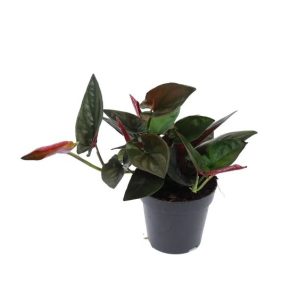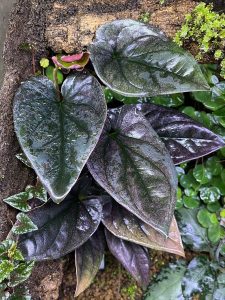Syngonium is a beautiful houseplant native to tropical regions known for its unique leaf shape and rich green variations. A popular choice for indoor planting, Syngonium’s light requirements are a key factor in its healthy growth. The right lighting conditions will not only promote vigorous growth, but also avoid common problems such as yellowing and wilting of leaves.

Syngonium
Light requirements of Syngonium
Syngonium has high light requirements, but is not suitable for exposure to strong direct sunlight. It usually prefers bright indirect light or diffuse light, which simulates the light conditions in its natural habitat. In its natural habitat, Syngonium grows in the shade of tropical rainforests, so it can adapt to low light environments, but in insufficient light, its growth may become slow and its leaves may fade or fall.
Light intensity
Bright indirect light
Bright indirect light is the most ideal light condition for Syngonium. In an indoor environment, this means that the light should be diffused through curtains or window coverings, rather than shining directly on the plant. South-facing windows are the best location to provide bright indirect light, especially in winter when the sun is softer. This light condition can stimulate the growth of Syngonium and maintain the health and color of its leaves.
Indirect light supplementation
If the indoor light is insufficient, you can use plant growth lights to supplement the light. LED growth lights or fluorescent lights are good choices. They can provide the spectrum required by Syngonium to promote photosynthesis of plants. When using plant growth lights, you should keep the distance between the lamp and the plant between 30 and 60 cm to avoid overexposure.
Light direction
Choosing the direction of the window
When growing Syngonium indoors, choosing the right window direction can effectively provide appropriate light conditions. South-facing windows usually provide enough light, especially in winter. East-facing windows are also suitable for Syngonium because the morning sunlight is softer and will not cause damage to the plant. West-facing windows have stronger sunlight, and you may need to use curtains or blackout nets to adjust the light intensity. North-facing windows have weaker light and are usually not bright enough, so additional plant growth lights may be needed to supplement the light.
Shading and Light Filtering
In environments with strong light, using curtains or blinds to filter direct sunlight can provide the right light intensity for Syngonium. For plants in areas with strong light, make sure the light passes through appropriate shields to avoid damage to the plant due to excessive light.
Lighting Regulation Strategies
Lighting Adjustment
Regularly adjusting the position of Syngonium can ensure that the plant receives even light. In different seasons or at different times of the year, the light intensity in the room will change. Regularly checking the position of the plant and adjusting its position according to the light conditions can help the plant maintain a healthy growth state.
Plant Rotation
Regularly rotating the plant can ensure that all parts of the plant receive light evenly, thereby promoting balanced growth of the plant. Especially when the light source is only on one side, rotating the plant can prevent one side of the plant from growing too long while the other side is relatively weak.
Lighting Problems and Solutions for Syngonium
Insufficient Lighting
If the Syngonium does not receive enough light, the plant’s growth will become slow and the leaves may turn yellow or fall off. Solutions to this problem include increasing the use of plant grow lights or moving the plant to a brighter location. Cleaning windows regularly to ensure that light can enter the room smoothly is also an effective measure to improve lighting conditions.
Too much direct sunlight
Direct sunlight may cause the leaves of Syngonium to burn or turn yellow. If the plant is exposed to strong sunlight, you can use shade nets, curtains or blinds to adjust the light intensity to ensure that the plant can receive indirect light.
Symptoms of too much light
Common symptoms of too much light include yellowing of leaf edges and scorch marks on leaves. When you encounter these problems, you should immediately adjust the position of the plant or use shading measures to reduce the light intensity.
Growing season and light of Syngonium
Spring and summer
In spring and summer, Syngonium has a higher light demand. At this time, the plant should receive sufficient bright indirect light to promote growth and flowering. If there is insufficient light indoors, you can consider increasing the use time of the plant grow light.
Autumn and winter
In autumn and winter, the sunlight is softer, and the light demand of Syngonium is reduced. At this time, you can appropriately reduce the use time of the plant grow light, but you still need to ensure that the plant can receive enough light to maintain a healthy state.

Syngonium
Syngonium is a beautiful indoor plant, and its light requirements are key to maintaining healthy growth. Understanding the light requirements of Syngonium, including light intensity, direction, and regulation strategies, can help ensure that the plant thrives in your indoor environment. With proper lighting conditions and light management, common lighting problems can be avoided and the plant’s vitality and beauty can be maintained. Whether it is choosing the right location or using supplemental lighting, proper light management is the key to successful Syngonium cultivation.
Post time: 08-13-2024




